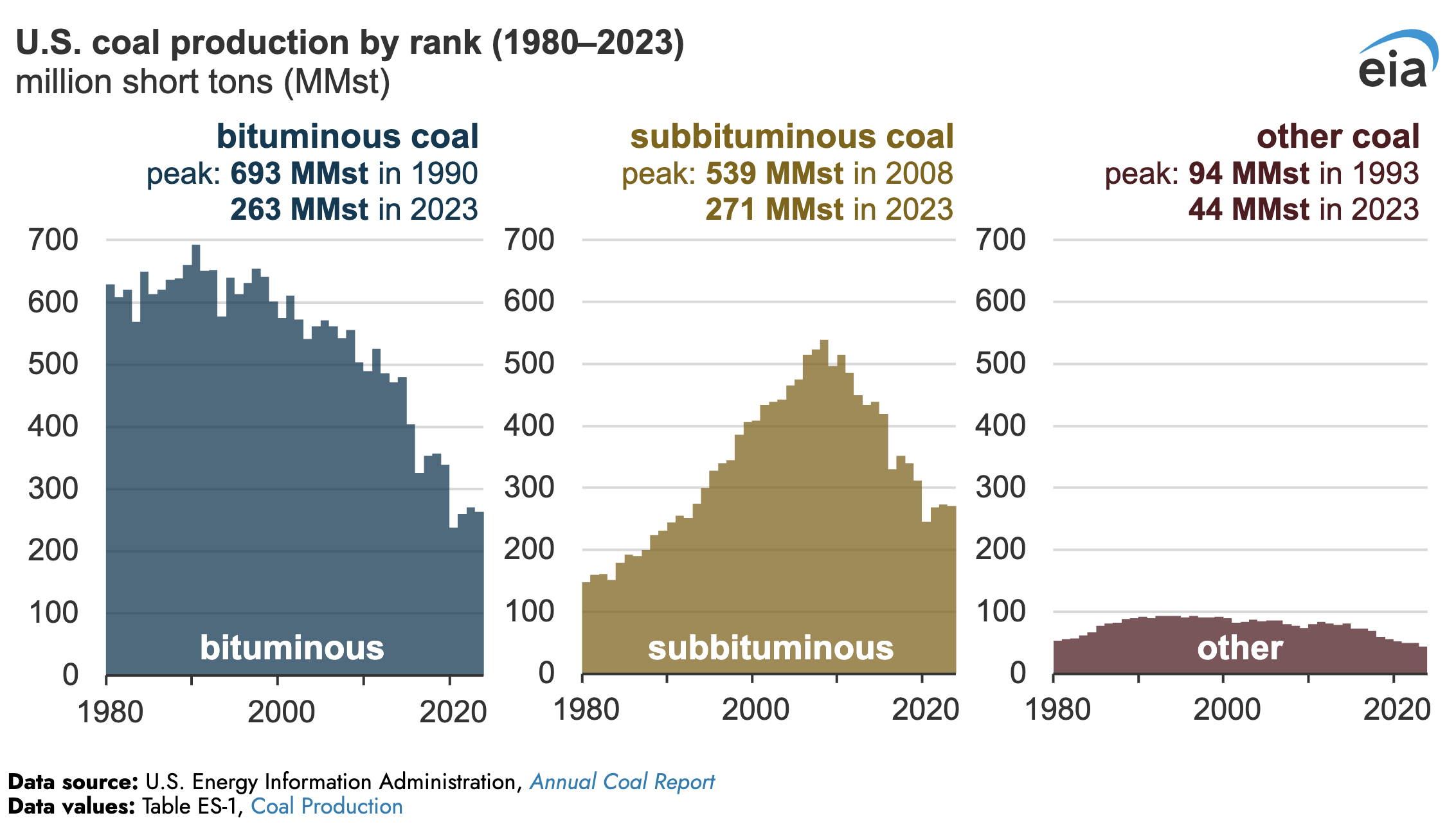U.S. Production of All Types of Coal Has Declined over the Past Two Decades

Last Updated on: 9th April 2025, 01:52 am
In 2023, the United States produced 578 million short tons (MMst) of coal, or less than half of the amount produced in 2008 when U.S. coal production peaked, according to our most recent Annual Coal Report. The production decline is spread almost evenly across each type of coal and continued in 2024. Rising mining costs, increasingly stringent environmental regulations, and competition from other sources of electric power generation have contributed to domestic coal production declines.
The rank of coal depends on the depth at which coal deposits are buried. Deeper coal deposits have experienced more heat and pressure over time, providing those coals with higher heat capacity, higher carbon content, lower moisture, and fewer impurities. When ranked by their carbon content, the highest-ranking coal is anthracite, followed by bituminous, subbituminous, and lignite coal.
Coal mining companies produce bituminous coal primarily from the Appalachian and Illinois Basins, both of which cover large areas in the eastern United States. Subbituminous coal is found in various parts of the western United States, especially in the Powder River Basin in northeastern Wyoming and southeastern Montana. Mining companies produce lignite coal across several parts of the Midwest, mostly in North Dakota and Texas.
Coal producers mine and sell the four ranks of coal mined in the United States primarily as thermal coal, which operators at power plants burn to produce steam for electricity generation. Bituminous coal, particularly from the Appalachia region, also has metallurgical characteristics, making it a critical raw material used in blast furnace steelmaking. In 2023, the United States exported 51 MMst of bituminous coal as metallurgical coal.
Coal producers tend to sell subbituminous coal to coal-fired power plants across the United States, or, less often, export the coal to countries in Asia. Subbituminous coal’s low mining costs and relatively low heating value are partially offset by the high cost of transporting coal long distances, usually by rail. Coal producers tend to sell lignite almost exclusively to power generating plants located near mines. This proximity is a key economic factor given the low heat content of lignite coal.
Our Annual Coal Report provides detail on U.S. coal production, mining productivity, reserves, prices, and other series. More recent information on coal production from our Quarterly Coal Reports and Weekly Coal Production Reports shows that U.S. coal production continued to decline in 2024. Our latest Short-Term Energy Outlook forecasts U.S. coal production to decline from an estimated 512 MMst in 2024 to 483 MMst in 2025 and 467 MMst in 2026 because of coal’s continued competition with natural gas and renewables in the electric power sector.
Principal contributor: Jonathan Church. Article courtesy of U.S. EIA.
 Whether you have solar power or not, please complete our latest solar power survey.
Whether you have solar power or not, please complete our latest solar power survey.

Have a tip for CleanTechnica? Want to advertise? Want to suggest a guest for our CleanTech Talk podcast? Contact us here.
Sign up for our daily newsletter for 15 new cleantech stories a day. Or sign up for our weekly one if daily is too frequent.
CleanTechnica uses affiliate links. See our policy here.
CleanTechnica's Comment Policy



